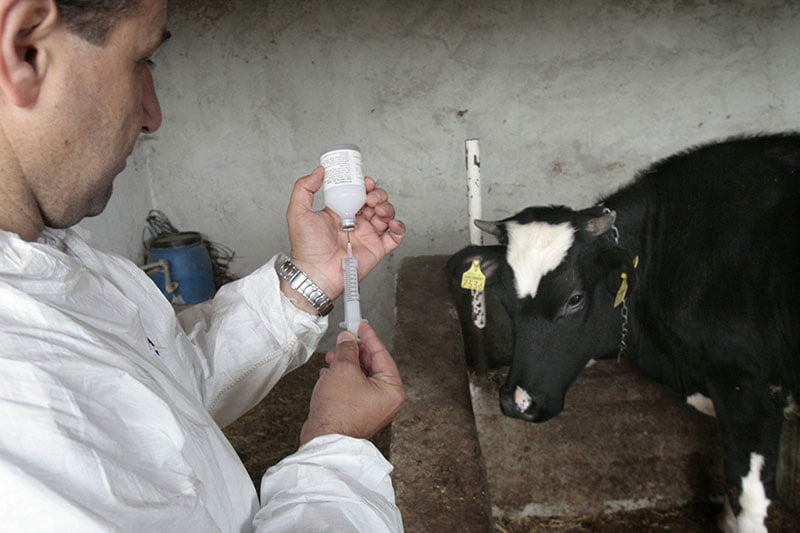Ed note. This is a special edition of The Takeaway, a regular feature in which global health and development expert Alanna Shaikh breaks down key reports from the global development community. In this post, Alanna dissects a new report from the World Bank that quantifies economic losses caused by antibiotic resistance worldwide. This report was timed to coincide with a key meeting at the UN General Assembly today in which the UN, for the first time, agreed to a common global plan to slow global antimicrobial resistance. This is only the fourth time in the UN’s 71 years that an UNGA session has focused on a global health issue, underscoring the unique nature of this threat to the health and wealth of nations.
Antibiotics are losing effectiveness. Bacteria are becoming resistant to them. It started slowly – resistance to antibacterials began with a few years of the first widespread medical use of penicillin. Resistance was isolated, though, to a few locations and a few specific bacteria. Globalization and the use of antibiotics for non-medical purposes such as agriculture have changed that. Antibacterial resistance is now growing rapidly. We’ve discovered that resistant bacteria can actually share the gene for resistance with unaffected bacteria, and the ease of air travel means that resistant bacteria are no longer confined to one place.
A new World Bank report looks at the damage caused by resistant bacteria, referred to as antimicrobial resistance (AMR) in a new way. They don’t talk about superbugs and their medical impact. Instead, being the World Bank (and not the WHO), it looks at the economic losses that resistance to antimicrobials will cause. The report finds that by 2050, annual global GDP would fall by 1.1% in the low-impact resistance scenario and 3.8% in the high-impact resistance scenario. Extreme poverty will be worsened. And, ironically, global livestock production could decline by as much as 7.5% per year.
The report also finds that supporting strict measures to reduce the spread of resistant bacteria is an excellent investment. Recommending that these measures be viewed as a form of insurance, the report states that, “from the health care sector’s perspective, spending on AMR containment is an insurance proposition on attractive terms: the expected annual payout is a high multiple of the annual premium.” In plain language, supporting stronger control measures now is like paying an insurance premium that will bring use huge rewards later in the form of better health. While the report focuses on economic impacts, the Bank also reminds us that reducing global infectious disease is a model example of a global public good. The nature of infectious bacteria means that all countries benefit from its control.
After discussing the economic impacts of resistant bacteria, the report goes on to detail what measures can be taken to slow the proliferation of these bacteria. It begins with a discussion of why global collective actions is required to address the issue, and then reminds us again of the economic benefits of such action to the wealthy countries who would presumably need to finance it, “…assuming that the AMR containment efforts would succeed in reducing the economic costs of AMR by 50 percent, the populations and economies of high-income countries would obtain benefits ranging between $4 trillion and $14 trillion in the “low-AMR” and “high-AMR” scenarios, respectively… Even efforts that are only 10 percent successful would bring immense benefits to high-income countries: $0.9 trillion in the “low-AMR” scenario and $2.7 trillion in the “high-AMR” scenario.”
The Bank explicitly supports the World Health Organization’s global action plan for bacterial resistance, which divides the actions required to control resistant bacteria into five categories: Strengthen Knowledge and Evidence Base, Reduce the Incidence of Infection, Optimize Use of Antimicrobials, Improve Awareness and Understanding of AMR, and Make Economic Case for Investment.
-Strengthening knowledge and evidence centers on epidemiological surveillance of resistant bacteria and sharing resistance data globally. They also call for more research into the forms and mechanisms of resistance, and tracking and reporting usage of medical and agricultural antibiotics.
-Reducing the Incidence of Infection tries to reduce the prevalence of all bacterial infections, and therefore resistant bacteria. It includes efforts such as increasing vaccination of agricultural animals, improving hygiene and infection control in hospitals and in veterinary care, and implementing best practices in care for animals.
-Optimizing Use of Antimicrobials focuses on preserving the power of the antibodies that still work. It calls for stronger guidance on antibiotic use in medical and veterinary care, restrictions on access to antibiotics, and reducing the financial incentives to prescribe antibiotics. It also calls for phasing out the use of antibiotics in agriculture, which is a major and essential step to protecting the power of our remaining effective antibiotics.
-Improving Awareness and Understanding of AMR calls for better professional education on bacterial resistance, and teaching the general public about the issue.
-Making Economic Case for Investment looks forward at doing the research needed to bolster resistance containment efforts and develop new medical treatments to replace the antibiotics that have become useless.
Overall, this World Bank report is a powerful plea for effective global action on antibiotics. It brings a new approach to discussion the issue, first with its detailed economic modeling and then by calling for coordinated action in human health care, veterinary health care, and in preventative agricultural use of antibiotics.
What the report doesn’t say
The report doesn’t discuss which countries should provide the financing to contain the spread of resistant bacteria, perhaps because that could distract from the economic case it describes.
One sentence takeaway
Stopping the spread of resistant bacteria is a good investment for human health and the global economy.
